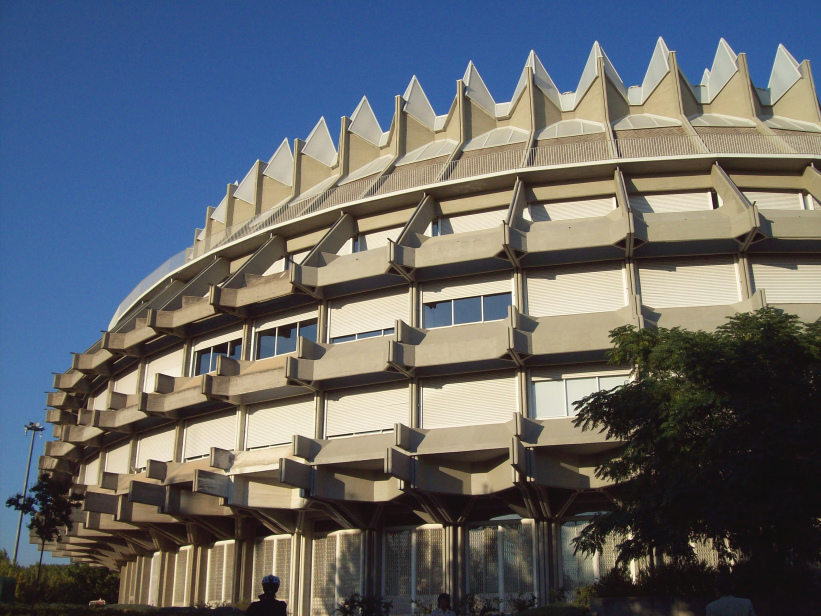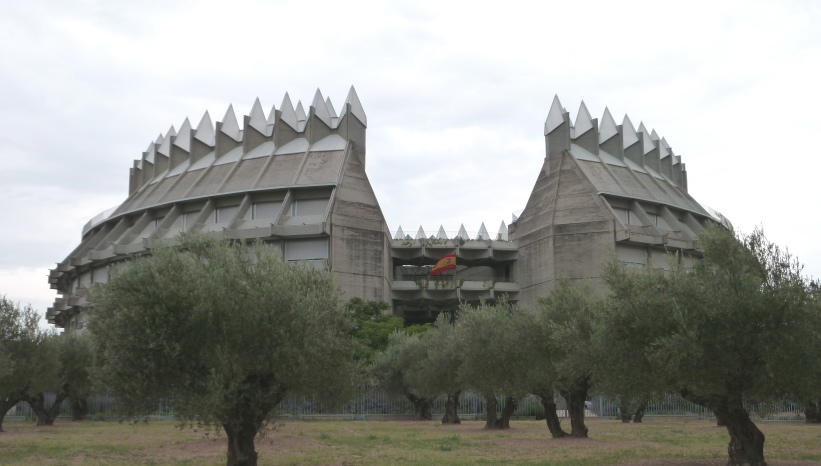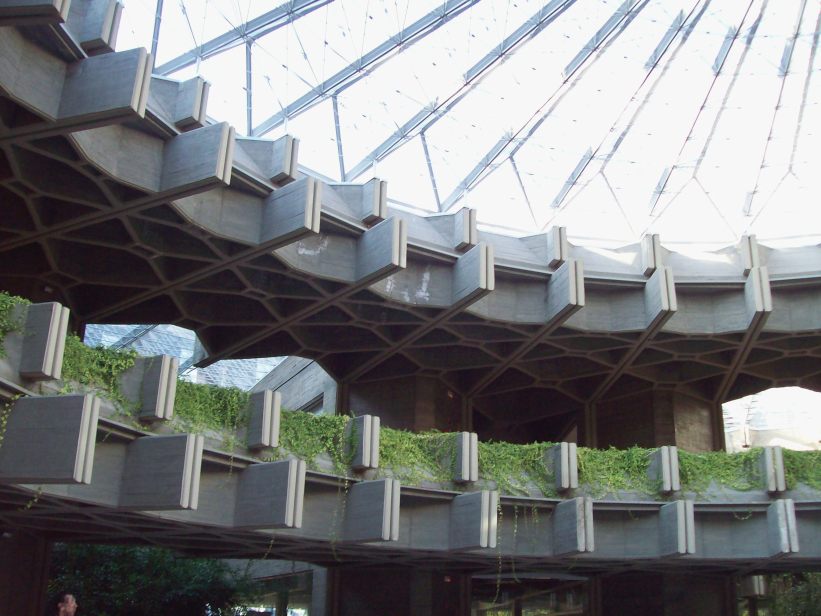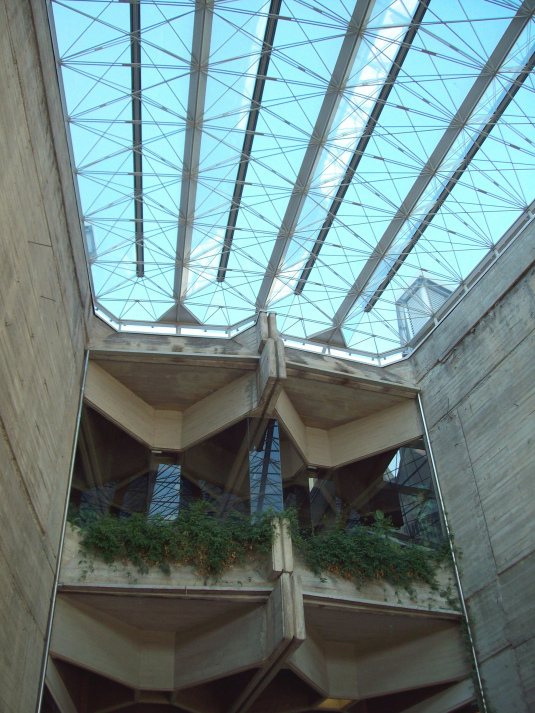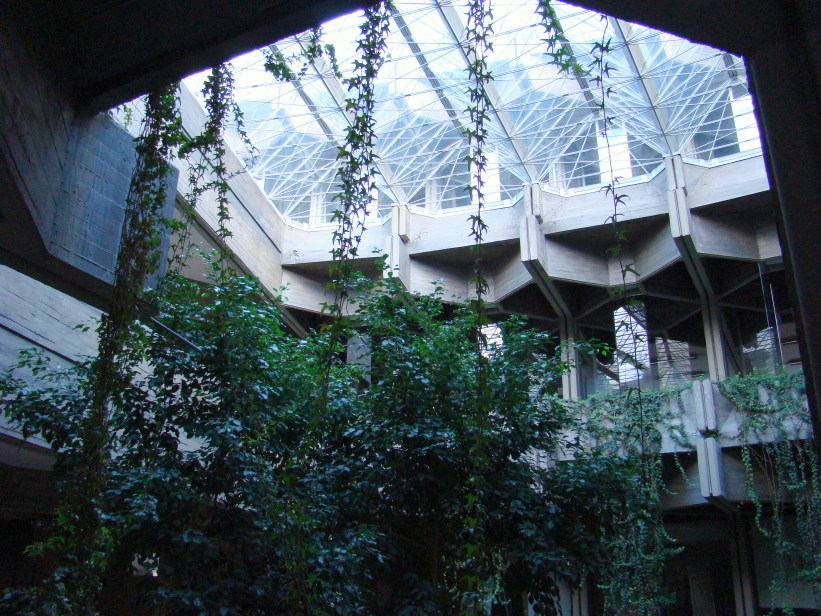Fernando Higueras DĂaz / Antonio MirĂł: Instituto del Patrimonio Cultural de España, 1965D–1990
- Madrid, Spain, Show on map
- #CUL #Western Europe
-
The Instituto de Patrimonio Cultural de Espana in Madrid is a governmental cultural center, which includes restorashion workshops, laboratories, archives, a center for research and education and a library amongst others.
The construction rises above a cricular plan with a diameter of 80 meter and its front exists of 60 moduls, which originally exposed the raw concrete. The vertical elements pop out of the facade while the vertical components work as a brise-soleil. The ground floor is recessed and it also has, like the 4th floor, a higher ceiling so that big pieces can be transported and restored. At the same time the building finishes with a crown of pyramidal shaped rooflights. On the top of the house there is a glazed central roofing surrounded by five more rooflights, that are constructing voids in each floor straight down to the basement where plantation was integrated. The void in the middle of the building is above the library which is in the basement, situated in a cylinder of concrete but with walls of woodpanels. The circulation within the edifice is regulated by two cocentrical circles: the inner one is for short distances while the outer circle provides the working places.
The building is also known as the corona de espinas (crown of thorns) and has its origin in a project which was the winner of the national competition of architecture in 1961, with the only requirement to design a centro de restauraciones. In 1965, this pre-project was modified with the help of the UNESCO and the Institut Royal du Patrimoine Artistique (IRPA) in Belgium, and adapted to the needs of such an institute. In 1968 they had to change plans again because of problems with the building ground – from here derives the characteristic shape of the buildung with the recessed ground floor and the crown of pyramidal shaped rooflights. After some political confusions the construction was stopped in 1970 and it wasn't finished until 1990. During that time there were many different suggestions for the use of the bulidng, f.e. As a library for the Universidad Compultense, a constitutional court or as a amplificacion of the Moncloa-Palace, just to name a few. In the end its function as a restoration center was brought to live again and the institute as we know it today was constructed.
-
In 2017 the bulding was painted in its main parts with a light grey colour, which is supposed to imitate the appearance of the concrete.
The construction was declared "Bien de Interés Cultural" in 2001, as the first one that has ever recieved this title during the lifetime of its architects.
Special thanks to Rebecca Neumann
